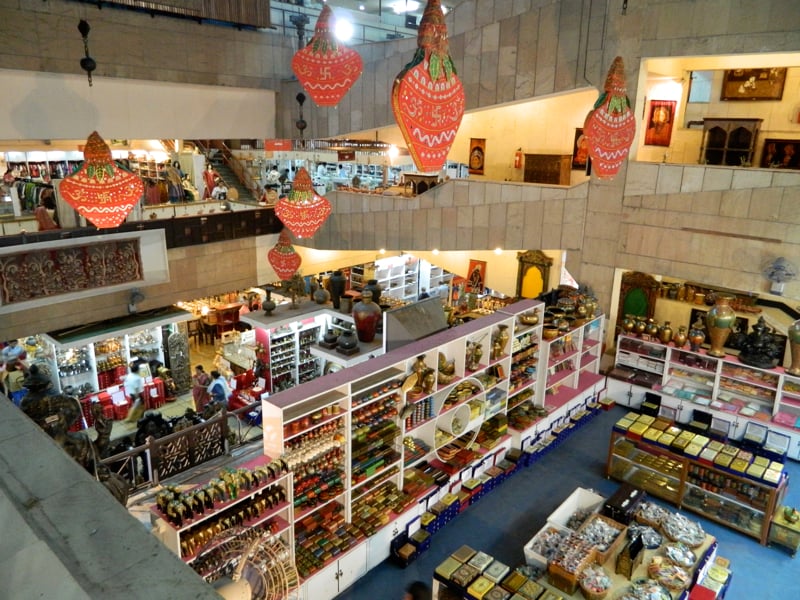The Data Handbook
How to use data to improve your customer journey and get better business outcomes in digital sales. Interviews, use cases, and deep-dives.
Get the bookI was born in the era of the 90s, a millennial offspring in the most veracious manner. Coming from a three-person Indian family, shopping formed the nucleus of family outings.
The auspicious day of Sunday was chosen as the shopping day as that was the only time when both my parents were free for an outing. We would specifically preplan the items we desired, and my mother would scratch off things she thought were unnecessary.
The shopping sojourn would begin in a shopping arcade, where the three of us would saunter into various stores, wait patiently as the one tried on clothes or shoes and try not to look too bored when my father dragged us into hardware stores or my mother spent ages deciding between two garments.
The whole experience was exhausting and time-consuming, and we would be drained by the end of a 9-hour shopping spree. Seems like a tale from an archaic era?
Fast forward to 2023, where electronic commerce has taken the world by storm and brought shopping experiences to our fingertips. The outset of the coronavirus pandemic fuelled the e-commerce storm, where humans, being imprisoned in their homes, resorted to the internet to fuel their retail desires. Agile checkouts, flashy sales, and BNPL (buy now, pay later) mark the natural order in the e-commerce universe.
Moreover, the consumer has more power in the digi verse, with the ability to compare prices and features, discern other people's opinions and access discounts. The world of e-commerce allows the customer to wield a multi-hyphenate power over their shopping experience, making this retail experience here to stay for a long time.

Design has enriched the turf of e-commerce by generating stupendous growth for numerous businesses. Lately, it has taken a larger-than-life position in conversion optimisation by making bijou yet strategic tweaks to user experience flows, which has galvanised stakeholders in discerning its advantages. The sole purpose of ecommerce is to spawn more business, i.e. more sales, i.e. more customers purchasing goods from their digital channels, i.e. more profits being created. Design aids the former by finding nuances which can be improved or changed in order to create a larger business impact.
So what are the tenets of a good design-infused ecommerce experience?
Form Follows Function

Above is a classic case of form overtaking function! Though the glass looks aesthetically interesting, it does not serve the purpose it has been created for, making the life of a wine drinker miserable.
One of the important fields where the form-follows-function tenet can be used is growth design. As implied, utility should always come second to design (form); therefore, aesthetics should never serve as the primary goal. They cannot be overlooked, yet the function takes centre stage.
For instance, checkout processes must be simple and easy since customers want an uncomplicated flow. The design becomes overly complicated with several form fields and lengthy labelling, often dissuading the customer from completing the process. It becomes messier on mobile screens due to the lack of real estate and typing being more cumbersome on phones. The checkout flows are a key decision-making moment for the customer, where there is a high chance of abandonment hence it is important to create designs which enhance readability and make the process optimal.
Continuous design
As a growth designer, your work is never-ending. It is a circular and iterative procedure that necessitates ongoing attention depending on the findings of A/B or user testing. One needs to be mentally prepared to alter designs based on the success rate of conversion optimization or user feedback. Sometimes the design needs alteration based on the placement of buttons and see if that changes the rate of clicks or changes in word labeling. Other times, user feedback gives key qualitative insights which can be incorporated into the final designs.
Mixed Mindsets
It is important to possess both a bird’s-eye-view and an ant’s-eye-view while working as a growth designer. A bird's eye gives you a wider perspective on the project and makes you more cognisant of timelines, budgets, and stakeholder expectations i.e. providing a more generalised yet realistic panorama of the project.
An ants eye view helps one drill down to details of the design, ranging from detailing buttons to cleaning out user experience flows. A combination of both is a powerful mindset for a growth designer as it lets them execute in more optimal ways.
Too many cooks spoil the broth
Everyone will want to have a say in the design because the final product is what the user sees and experiences. However, it's crucial to limit the number of stakeholders who have a voice in the decision-making process. Conflicting viewpoints and mindsets frequently result in longer meetings and lower productivity.
Determine early on who can serve as the design point of contact, provide reliable input, and advance the process. It's critical to establish working methods based on the project's requirements. It may occasionally be a design sprint, a sales pitch, work specifically related to a design system or just a research study.
Don't try to salvage everything… together
It is crucial for growth designers to put usability and customer objectives first. The procedure is more waterfall-style, where you create a change, test it, and then make adjustments based on the test results. In contrast to the strategy where the designer builds everything and leaves testing until the end, which frequently results in additional bottlenecks towards the finish.
The trickle-down process helps solve problems in a more optimal manner.
To conclude, being a growth designer requires having an open and flexible perspective, being able to communicate well across teams, and having oodles of patience. We frequently don't have the luxury of time or budget because of the fast-paced nature of the profession, so we must act promptly. Unlike the typical designer, we mostly need to optimise existing processes and don't have to reinvent the wheel.
The Data Handbook
How to use data to improve your customer journey and get better business outcomes in digital sales. Interviews, use cases, and deep-dives.
Get the book



